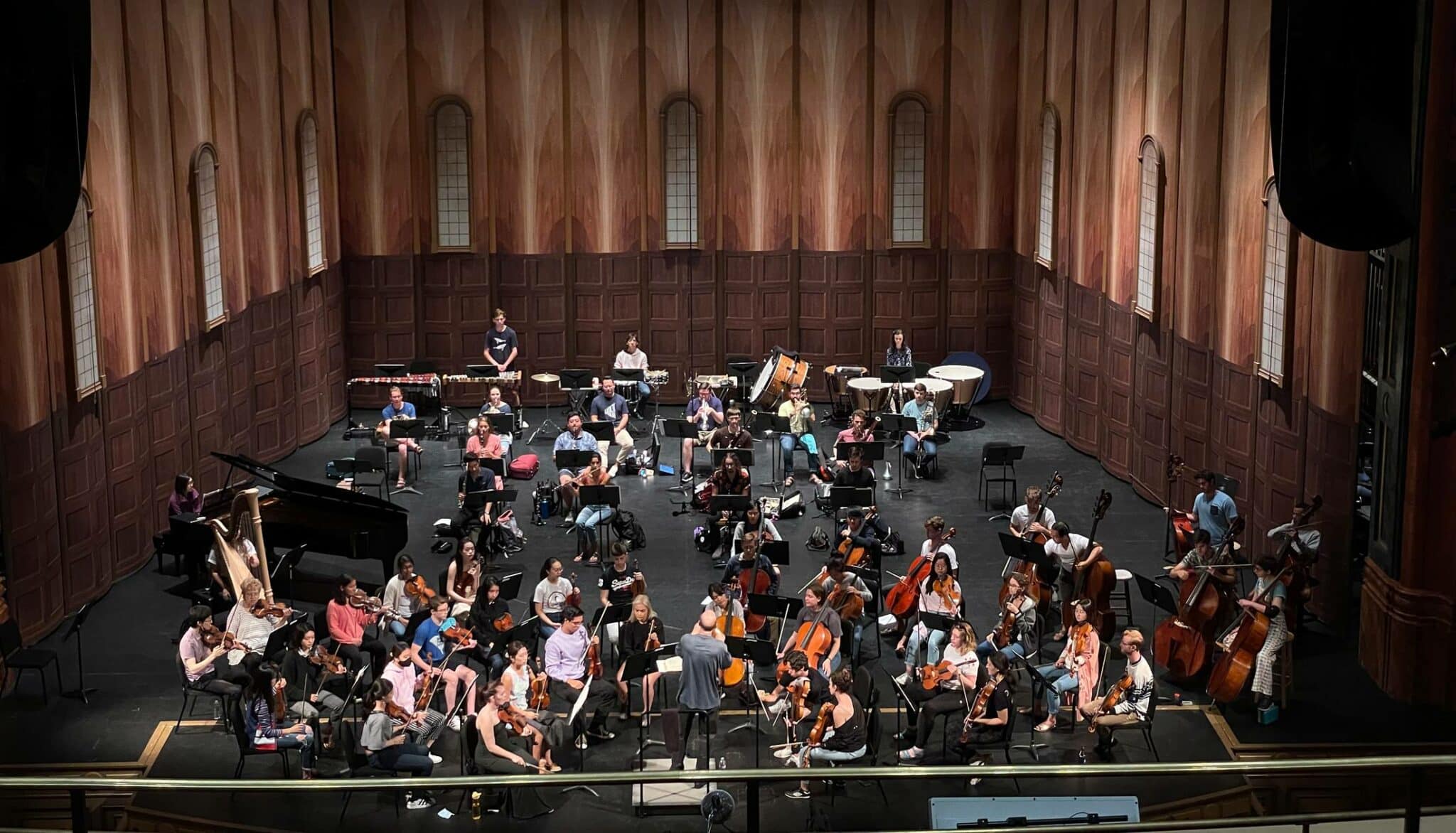Aaron Copland’s Appalachian Spring will be featured on the Academy Chamber Orchestra concert conducted by Larry Rachleff at the Granada Theatre this Saturday, July 31 at 7:30 pm. Get your tickets now for this concert, which also features Leonard Bernstein’s “Times Square 1944,” from On The Town: Three Dance Episodes and Charles Ives’s Three Places in New England.
BUY TICKETS
This program note comes courtesy of the Music Academy’s partnership with the UC Santa Barbara Department of Music, a key part of Project Resonance, a unique program combining writing training with public engagement. Through this initiative, both Academy fellows and young scholars from UCSB are given the opportunity to work on program notes and other written materials for the Summer Festival.
***
One of the most well-known of Aaron Copland’s orchestral works, Appalachian Spring started out its life as a small chamber work for Martha Graham’s dance troupe and a limited 13-instrumentalist ensemble. The two-year collaboration between Copland and Graham was one of three ballets commissioned from Graham in 1942 by renowned pianist, composer, and chamber music impresario Elizabeth Sprague Coolidge. This piece is perhaps better known for the full orchestral version, which has been performed often, presented as a hallmark of Copland’s American populist style.
By the time Coolidge commissioned the ballets in honor of her 80th birthday, she had built an impressive career as a champion of chamber music in the United States. Her first chamber music festival in 1918, at the tail end of World War I, brought musicians from various backgrounds together in the Berkshires near Pittsfield, MA (better known today for nearby Tanglewood and the Massachusetts Museum of Contemporary Art, both of which carry on legacies of new and experimental chamber music performance). In an interview recorded for radio broadcast the day before Appalachian Spring premiered on October 30, 1944, Coolidge detailed this first festival in the Berkshires in an explanation of her history as a patron and organizer:
“…in the September of the next year, 1918, just a few weeks before the Armistice was signed,” she says, “we gathered in the little mountain temple[…]and there held our first Berkshire Festival of Chamber Music. Among us were members of the warring nations—French and German, Austrian and Italian—glad to be friends again for a few hours in the presence of nature and music.”
When Coolidge recorded those words for radio in 1944, yet another World War was raging, and her legacy had grown beyond the Berkshire Chamber Music Festival. She had built a chamber music series at the Library of Congress in Washington, D.C., providing capital for artist bursaries as well as funding the construction of the Coolidge Auditorium, built in the mid-1920s by enclosing an existing courtyard in the Library of Congress building adjacent to the Music Division. The auditorium was wired for recording, at Coolidge’s insistence, so that the concert series could be broadcast on multiple national radio networks. Throughout the 1920s and beyond, Coolidge encouraged numerous artists, some already established and others as they struggled, to build recognition as composers and performers—including Igor Stravinsky, Béla Bartók, Ernest Bloch, and Rebecca Clarke, in addition to Martha Graham and Aaron Copland.
In the two-year collaborative development of Appalachian Spring, Copland was guided by Graham’s conceptualization of plot and mood for the piece. In a letter to Coolidge just after the commission was first suggested, Graham writes a little about her preferred mode of work with composers:
“I have always chosen a subject when I was asking a composer to write for me. I submitted to him the idea and a detailed script, not of the dance steps, etc., but of the idea and the action. I have done these things only that I could feel and understand, not in a verbal sense, perhaps, but in my medium, my instrument, my body.” (Martha Graham in a letter to Elizabeth Sprague Coolidge, August 2, 1942)
In the same letter, Graham also betrayed her own anxieties as an artist in the midst of World War II. “We all feel more responsible to work harder in this grave world than ever before. Perhaps there must be more life more intensely and magically used at this time to meet the tragedies of destruction.” Graham’s idea for the ballet plot seems a reaction to the uncertain and violent times. She gravitated toward the Americana aesthetic and nostalgic tone of Thornton Wilder’s 1938 play Our Town, and set her plot in a small town in Western Pennsylvania in the 1800s.
As Graham shared her “script” with Aaron Copland, the ballet concept was somewhat fuzzy— Graham initially wrote to Copland, “This is a legend of American living. It is like the bone structure, the inner frame that holds together a people.” Copland left much of the piece open-ended as Graham solidified plot and direction, and built the piece’s aesthetics around Graham’s notions of a 19th-century wedding in a small town. The piece wasn’t titled Appalachian Spring, after a line from Hart Crane’s long-form poem “The Bridge,” until its completion; Copland used “Ballet for Martha” as a placeholder. Long after the collaboration, Copland emphasized how important the collaboration between himself and Graham was in conceiving the piece—“The music was created for her,” he said, “and it reflects the unique quality of a human being.”
By this time, Copland was already known for his ballet scores. Billy the Kid (1938) and Rodeo (1942), American populist mainstays, had already consoled audiences throughout uncertainty, industrialization, militarization, and social reorganization during the early years of World War II. As he and Graham worked together on the piece between 1942 and 1944, the war raged in Europe and the Pacific. Four months before Appalachian Spring’s premiere at the Library of Congress on October 30th, 1944, the D-Day invasion started the turn of the tides in the European theater in favor of the Allies; ten months after, the United States dropped atomic bombs on Hiroshima and Nagasaki.
Appalachian Spring’s idealization of folk Americana was already embedded in Copland’s populist compositional style, in which he used open, sparse orchestral textures juxtaposed with choral-like sections and sprightly folk tunes. The piece makes use of simple fragments—a snatched arpeggiation here, an unexpected driving rhythm there—that suggests characterization and interaction between the ballet’s protagonists. Indeed, much of the piece feels like cut-off phrases snatched from some unheard, broader, all-encompassing harmonization, and allowed to exist, for a brief moment, as its own melody. The texture comes into focus around Copland’s inclusion of the Shaker folk tune “Simple Gifts,” and dissipates back into elegiac wisps of soft chorales and bird-like twitters.

Copland edited the original score for Appalachian Spring for a larger orchestral ensemble, resulting in the Appalachian Spring Suite, which the New York Philharmonic premiered in October 1945—and is the version of the score that you will hear performed by the Academy Chamber Orchestra. In the suite, around ten minutes of the ballet’s music was removed, as Copland thought the music was too ballet-specific for the orchestral version. In the ballet, there was a longer interpolation of material after the first iteration of the “Simple Gifts” tune—turning abruptly from the folk hymn to an ominously aggressive section that makes use of rat-a-tat percussion, propulsive piano riffs, horn interjections and spiky strings lines—before returning to fragmented motives from earlier in the piece and, finally, back to the Shaker tune.
Considering this removed militaristic material, alongside the story of the piece’s commission during the height of World War II and its premiere at a Washington, D.C. governmental library, shows how important the idealized conceptualization of American roots, folk culture, and history were in art and culture during the war years. Even as destruction raged abroad and scientific development irreversibly changed notions of humanity in conflict, there was an abiding need to illuminate and cherish the perceived core of American values and heritage—potentially to justify the industrialization of war that brought the world to the brink of mutually-assured destruction. Copland’s use of “Simple Gifts” seems to reflect a wistful longing for the simpler ethics and communitas of more peaceful times; particularly, perhaps, for those aware of the song’s words:
‘Tis a gift to be simple
‘Tis a gift to be free
‘Tis a gift to come round where you ought to be
And when you find yourself in a place just right
‘Twill be in the valley of love and delight
– Eugenia Siegel Conte
PhD Candidate, Ethnomusicology, UC Santa Barbara
[big-cast]


